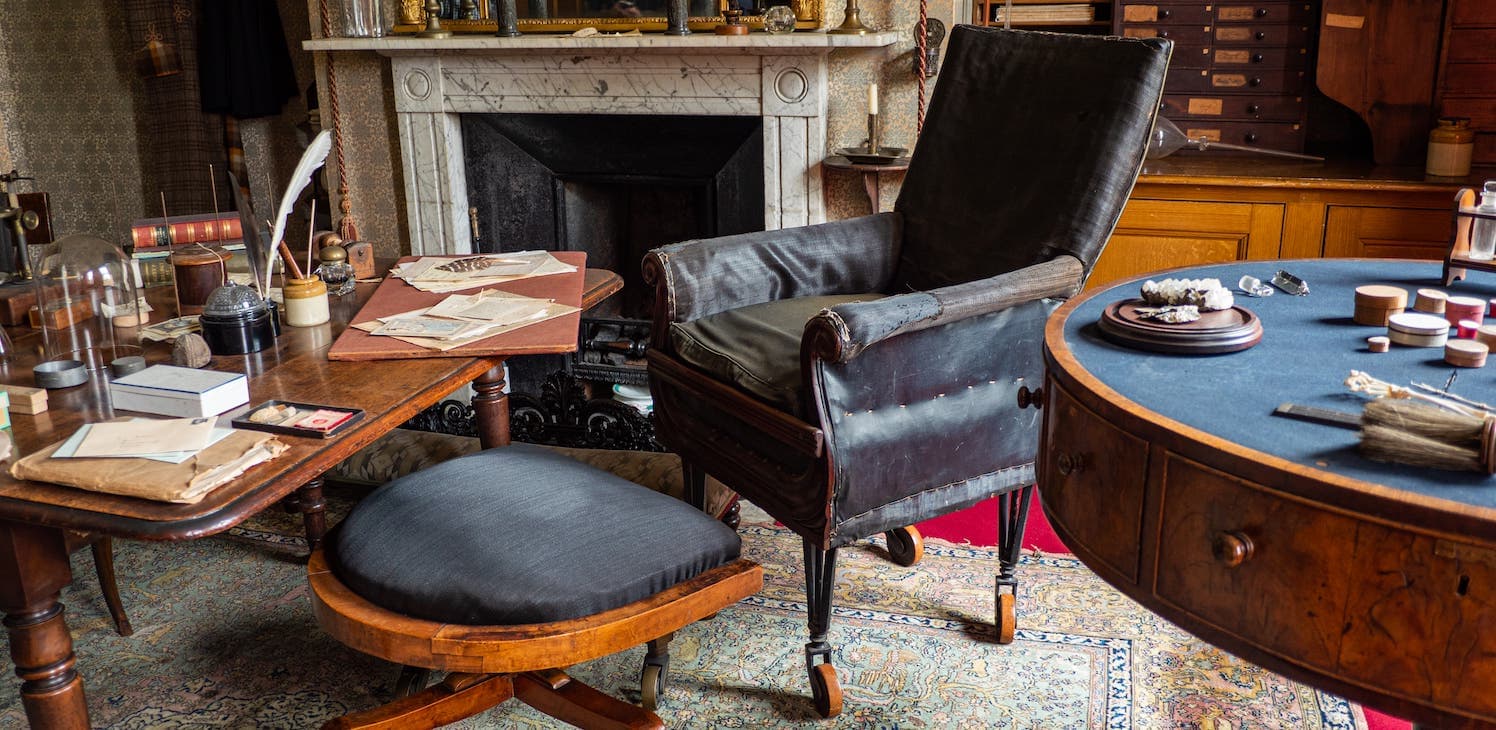Darwin was almost always in the company of dogs. Nina, Spark, Pincher, and Shiela. Snow, Dash, Bob, and Bran. The beloved terrier Polly (right). They were Darwin's constant companions at home and in the field, on walks and in sport, in his study and by the fireside. They were also fascinating objects of study. Darwin observed their variations in breed and behaviour, their adaptation to specific conditions, and their mental and emotional abilities, which approached those of humans.
In his youth, Darwin was passionate about hunting. When he was still in boarding school, he was introduced to the sport by his uncles Josiah Wedgwood II and William Owen. While at Cambridge, he got a new Pointer (Dash) to stalk pheasant across the fens. His description of a day's hunting reach the highest pitch of joy: "If there is bliss on earth, that is it". Darwin's experience with hunting dogs on the scent or giving chase, was important for his work on evolution. In an early draft on his species theory, he used the greyhound as a prime example of adaptation and selection, noting how its every bone and muscle, instinct and habit, were fitted to run down hare.

Darwin also studied the social behaviour of dogs, noting their bonds of affection toward their human masters. "It is curious to speculate on the feelings of a dog," Darwin wrote, "who will rest peacefully for hours in a room with his master or any of the family, without the least notice being taken of him; but if left for a short time by himself, barks or howls dismally." (Descent 1: 74)

Gone for a walk: the empty dog bed by the fire in Darwin's study.
In Descent of Man, Darwin's used dogs to illustrate the evolution of the moral sense. He gave the example of a pointer who displayed remorse after failing in his duty by giving chase. "A pointer ... would say to himself, I ought ... to have pointed to that hare and not have yielded to the passing temptation of hunting it." (Descent 2: 392) Darwin argued that dogs could recall wrongful behavior, and such memories would clash with their social instincts. Conscience thus arose through a conflict between enduring social feelings and more fleeting desires such as hunger or the urge to give chase. The same structure of feeling, he argued, formed the foundation of moral behaviour in humans.
Inspired partly by his love of dogs and his belief in their moral sense, Darwin became involved in a campaign to regulate animal experiments. He was convinced of the importance of experimental physiology, but wanted measures taken to protect animals from cruelty. In Descent, he remarked on the capacity of dogs to love in the face of such cruelty: "everyone has heard of the dog suffering under vivisection, who licked the hand of the operator; this man, unless he had a heart of stone, must have felt remorse to the last hour of his life." (Descent 1: 40)

Henrietta and Polly at Down House.
Darwin's favourite dog of all was Polly. He adopted her when his daughter Henrietta moved away after marriage. It is surely Polly whom he had in mind when he wrote to a correspondent: "I most heartily subscribe to what you say about the qualities of Dogs. I have one whom I love with all my heart".
On Darwin and the vivisection debate, Correspondence, vol. 23, Appendix VI





